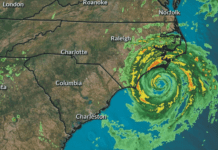January and February are often the hardest months for sailors in the U.S. Freezing weather and short days limit our sailing adventures to those we can pull off a shelf or upload to our iPad. This year, Practical Sailor’s Winter Reading List offers a roundup of books to boost y4our navigation, weather, and knot-tying know-how as you while away the winter hours hearthside. We’ve also included a few picks for the young adults in your crew; these reads will surely stoke their sailing daydreams as they too long for spring’s return.
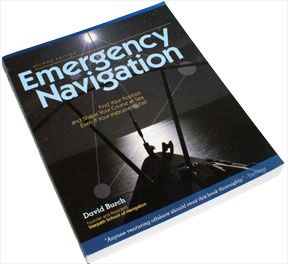
288
Navigation
• Navigation buffs will enjoy Donald Launer’s “Navigation Through the Ages” ($23.95, Sheridan House, 2009), which takes a look at the impressive navigational knowledge and skills of ancient navigators such as the Polynesians, the Vikings and the Arabs, before following the art and science of navigation through the Middle Ages, the Age of Discovery, and the Electronic Age. The book also closely examines the exponentially huge advances made in electronic navigation, assessing the many modern instruments and methods and their applications. “Navigation Through the Ages” is the fourth book published by Launer, who holds a U.S. Coast Guard license and has lectured on navigation at the U.S. Naval Academy and boating seminars across the U.S.
• David Burch, who’s written 12 books on marine weather and navigation, has also logged more than 70,000 miles at sea, including 12 transoceanic yacht races. The second edition of his “Emergency Navigation” ($19.95, McGraw-Hill, 2008) promotes the navigation methods ancient navigators used—steering by wind and swells, ocean current, and stars—as good practices for modern-day emergency navigation. Burch, in addition to offering multiple ways to determine latitude without electronics, gives a “making do” how-to that explains routine navigation with all instruments working, and then, one-by-one, eliminates them and explains how to get by without them. This is definitely a book to have onboard “just in case.”
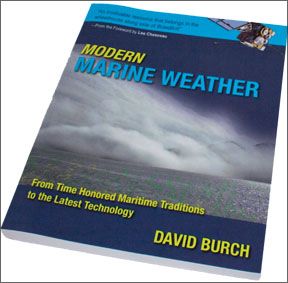
288
Weather Management
• Ben Franklin wrote about the “weather wise and the otherwise;” those who prefer to be included with the former should add a copy of Jack Williams’ new book to their nautical library.
In the “AMS Weather Book: The Ultimate Guide to America’s Weather” ($35, University of Chicago Press, 2009), Williams spells out in well-illustrated, equation-free text how global energy exchanges in the atmosphere result in calms, gales, and the fair winds we favor. He stresses that to develop a better understanding of marine weather, you need to start with an awareness of what happens to air masses as they move from west to east over the United States and Canada. Tropical weather is an issue, and retrograde lows developing off Cape Hatteras can spawn their own violent storms, but it’s their combined effect that choreographs the winds and waves at sea.
Williams is a science writer, founding editor of the USA Today weather page, and is currently the public outreach coordinator for the American Meteorological Society.
In this, his sixth book, he blends well-honed writing skills with an in-depth knowledge of the subject matter. His target audience includes all with an interest in the weather as well as those with a stake in the outcome. There’s plenty of use of sidebar details and informative photography, and there seems to be a near perfect balance between covering the full scope of weather features and not bogging down in the arcane.
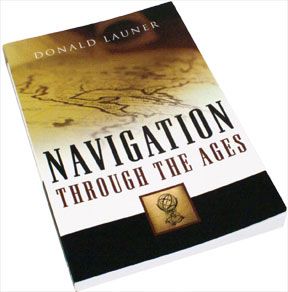
288
In addition to being a field manual on how to read the sky and put a weather map to good use, the book also holds a wealth of narrative information profiling people, places, technology, and how weather data is gathered and handled. It’s a good read, and despite the fact that terms like sloop, ketch or schooner are nowhere to be found, it’s definitely a text for sailors—a great source of level “101” weather information and a good starting point to gain a firm footing for more weighty incursions into 500 millibar charts and the dynamics of the upper atmosphere.
• The second Burch book we reviewed, “Modern Marine Weather” ($39, Starpath Publications, 2008), is an essential reference for the coastal and offshore sailor, detailing how to take weather into account when planning or navigating voyages. Burch discusses time-honored marine traditions, examines the latest weather technology, and shows how advanced technology, historic traditions and the many instruments in-between can be used in understanding wind, waves, and currents. Updates in our high-tech weather world are relentless, and Burch references his website, www.starpath.com/weatherbook, as a resource for the latest news on National Weather Service changes, weather map conventions, and software updates. Director of the Starpath School of Navigation in Seattle, Burch also is a Fulbright Scholar with a Ph.D in physics.
• Another Burch book for the weather-wise is “The Barometer Hand-book” ($30, Starpath Publications, 2009), an in-depth look at one of the oldest weather-forecasting instruments.
The book explains what a barometer is, how it works, and how it’s used to analyze and forecast marine weather. The guide introduces atmospheric pressure and examines weather systems (highs and lows). It looks at what is “normal” in different places and altitudes around the globe. Of great use to the cruising sailor is Burch’s focus on how and why changes in barometric pressure occur, what these changes tell us about the forecast, how they’re represented on weather maps and how to use them in route planning, navigation, and storm-sailing tactics.
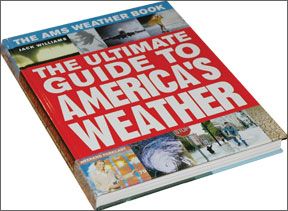
288
• Studying weather maps and poring over forecasts provide little training—or comfort—for those who’ve faced a 100-foot wave. Susan Casey’s “The Wave: In Pursuit of the Rogues, Freaks, and Giants of the Ocean” ($27.95, Doubleday Press, 2010) examines the scientific scramble to understand giant rogue waves, the ships that survive and record encounters with them, and the surfers who travel around the world in search of the ultimate ride on these ocean mammoths.
One such surfer is board-riding legend Laird Hamilton. Casey profiles Laird, his cohorts, and their Holy Grail quest to ride a 100-foot wave. She details the tow-in surfing methods they’ve developed to make it possible for humans to catch and ride stories-tall waves (70- to 80-footers). The surfers’ story, juxtaposed with scientists’ ongoing efforts to understand the destructive powers of immense waves like the 2004 Pacific tsunami that killed 250,000, makes for an interesting and entertaining read.
“The Wave” is available in paperback, hardback, e-book for Kindle ($10) and audiobook ($20-$24).
Young Adult Fiction
Three of our selections this winter are for young sailors, and we hope each will encourage the youngest among us to cast off the bowlines, sail away from the safe harbor, explore, dream, and discover as the authors and characters of these books have.
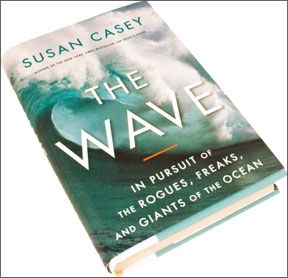
288
Jessica Watson began dreaming of sailing around the world, solo, non-stop and unassisted when she was a pint-sized 12-year-old growing up in Australia. “True Spirit” ($12, Atria Paperback, 2010) is Watson’s account of turning that dream into reality and of sailing alone around the world at the age of 16.
Although it is Practical Sailor’s policy not to promote or encourage single-handed ocean crossing or teenagers’ attempts to set solo-voyaging records (see “The Teenage Solo Sailor Syndrome,” PS October 2009), Watson’s story is consistent with one of our larger missions to encourage youngsters to take up the lifelong sport of sailing. This well-written book for youth readers would be a good gift for a young woman or man who shows an interest in sailing. As the tale of an independent and mature young girl, “True Spirit” also serves as further proof to teenage girls and young women that woman are more than capable of meeting the most extreme sailing challenges.
Watson’s modest upbringing, intensive training, and extensive research taught her that it wasn’t physical strength that was important in sailing or in a crisis at sea, it was technique and mental clarity. The book—a collection of the blog entries she made during the voyage—charts her east-to-west route around both Cape Horn and the Cape of Good Hope, and describes her provisions, equipment, and weather encounters. It offers a beyond-her-years description of her mental state as she overcomes a collision with a 63,000-ton freighter, confronts gale-force winds, enormous waves, icebergs, and knock-downs in the relentless Southern Ocean. Her Sparkman & Stephens 34, Ella’s Pink Lady shines throughout the story, a testament to a great little boat.
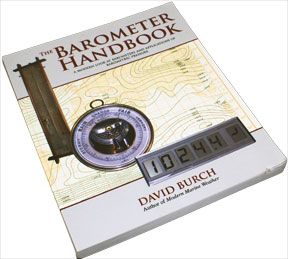
288
• “Oliver’s Surprise,” written by former Olympic sailor Carol Newman Cronin, is a fictional tale of two times: modern-day Jamestown, R.I., and Jamestown 70 years ago, just before the great hurricane of 1938. The book follows young Oliver Nichols, who, after bumping his head while aboard his favorite old schooner, Surprise, wakes up to find that he has been transported back in time, arriving days before an historic massive hurricane wreaked havoc on Jamestown and Narragansett Bay. Oliver revels in his chance to sail his favorite schooner during her glory days and forms a bond with the namesake grandfather he was dearly missing. Through Oliver’s eyes, the reader gets a glimpse of life aboard a classic schooner and the Jamestown waterfront in the 1930s. Just 80 pages long, “Oliver’s Surprise” ($15, GemmaMedia, 2008) is a fast-paced and engaging read for young adults, complete with the smell of tar, the breezy salt air, and the screech of New England seagulls.

288
• In M.H. Herlong’s gripping novel, “The Great Wide Sea” ($16.99, Viking Children’s Books, 2008), three young brothers discover the fragile limits of family bonds, confront betrayal, and discover the beauty of forgiveness. After the sudden death of their mother and the mysterious disappearance of their father, the boys face a terrible storm at sea. Ben, Dylan, and Gerry summon up all their knowledge and courage to tackle the storm, only to be shipwrecked on a deserted island, where they must learn to survive and come to grips with the tough lessons of life and the sea.7
Selected as one the Top 10 Books for Young Adults in 2010, Herlong’s first novel reflects her experience as a sailor, a teacher, and a parent. Her own Morgan 35 became the basis for the boys’ sloop, Chrysalis. The book is available in print and in a Kindle edition ($6). Its website, www.thegreatwidesea.com, includes information about sailing and voyaging routes, reading lists, a glossary of sailing terms, and a detailed page on different sail types—a great web resource for young sailors or any one new to the sport.

288
Knot Know-How
• “The Ultimate Book of Decorative Knots,” by International Guild of Knot Tyers member Lindsey Philpott, ($29.95, Skyhorse Publishing, 2008), is an extensively researched and well-illustrated book on how to tie decorative knots. This is a good book for those crafty types to crack open when the weather is too cold for any sailing. Philpott lays out the materials, methods, measurements, and tools needed for knotting. Step-by-step instructions accompany full-color photographs in this comprehensive and user-friendly guide.

288
roundup of books to boost y4our navigation, weather, and knot-tying know-how as you while away the winter hours hearthside. We’ve also included a few picks for the young adults in your crew; these reads will surely stoke their sailing daydreams as they too long for spring’s return.
Navigation
• Navigation buffs will enjoy Donald Launer’s “Navigation Through the Ages” ($23.95, Sheridan House, 2009), which takes a look at the impressive navigational knowledge and skills of ancient navigators such as the Polynesians, the Vikings and the Arabs, before following the art and science of navigation through the Middle Ages, the Age of Discovery, and the Electronic Age. The book also closely examines the exponentially huge advances made in electronic navigation, assessing the many modern instruments and methods and their applications. “Navigation Through the Ages” is the fourth book published by Launer, who holds a U.S. Coast Guard license and has lectured on navigation at the U.S. Naval Academy and boating seminars across the U.S.
• David Burch, who’s written 12 books on marine weather and navigation, has also logged more than 70,000 miles at sea, including 12 transoceanic yacht races. The second edition of his “Emergency Navigation” ($19.95, McGraw-Hill, 2008) promotes the navigation methods ancient navigators used—steering by wind and swells, ocean current, and stars—as good practices for modern-day emergency navigation. Burch, in addition to offering multiple ways to determine latitude without electronics, gives a “making do” how-to that explains routine navigation

288
with all instruments working, and then, one-by-one, eliminates them and explains how to get by without them. This is definitely a book to have onboard “just in case.”
Weather Management
• Ben Franklin wrote about the “weather wise and the otherwise;” those who prefer to be included with the former should add a copy of Jack Williams’ new book to their nautical library.
In the “AMS Weather Book: The Ultimate Guide to America’s Weather” ($35, University of Chicago Press, 2009), Williams spells out in well-illustrated, equation-free text how global energy exchanges in the atmosphere result in calms, gales, and the fair winds we favor. He stresses that to develop a better understanding of marine weather, you need to start with an awareness of what happens to air masses as they move from west to east over the United States and Canada. Tropical weather is an issue, and retrograde lows developing off Cape Hatteras can spawn their own violent storms, but it’s their combined effect that choreographs the winds and waves at sea.
Williams is a science writer, founding editor of the USA Today weather page, and is currently the public outreach coordinator for the American Meteorological Society.
In this, his sixth book, he blends well-honed writing skills with an in-depth knowledge of the subject matter. His target audience includes all with an interest in the weather as well as those with a stake in the outcome. There’s plenty of use of sidebar details and informative photography, and there seems to be a near perfect balance between covering the full scope of weather features and not bogging down in the arcane.

288
In addition to being a field manual on how to read the sky and put a weather map to good use, the book also holds a wealth of narrative information profiling people, places, technology, and how weather data is gathered and handled. It’s a good read, and despite the fact that terms like sloop, ketch or schooner are nowhere to be found, it’s definitely a text for sailors—a great source of level “101” weather information and a good starting point to gain a firm footing for more weighty incursions into 500 millibar charts and the dynamics of the upper atmosphere.
• The second Burch book we reviewed, “Modern Marine Weather” ($39, Starpath Publications, 2008), is an essential reference for the coastal and offshore sailor, detailing how to take weather into account when planning or navigating voyages. Burch discusses time-honored marine traditions, examines the latest weather technology, and shows how advanced technology, historic traditions and the many instruments in-between can be used in understanding wind, waves, and currents. Updates in our high-tech weather world are relentless, and Burch references his website, www.starpath.com/weatherbook, as a resource for the latest news on National Weather Service changes, weather map conventions, and software updates. Director of the Starpath School of Navigation in Seattle, Burch also is a Fulbright Scholar with a Ph.D in physics.
• Another Burch book for the weather-wise is “The Barometer Hand-book” ($30, Starpath Publications, 2009), an in-depth look at one of the oldest weather-forecasting instruments.
The book explains what a barometer is, how it works, and how it’s used to analyze and forecast marine weather. The guide introduces atmospheric pressure and examines weather systems (highs and lows). It looks at what is “normal” in different places and altitudes around the globe. Of great use to the cruising sailor is Burch’s focus on how and why changes in barometric pressure occur, what these changes tell us about the forecast, how they’re represented on weather

288
maps and how to use them in route planning, navigation, and storm-sailing tactics.
• Studying weather maps and poring over forecasts provide little training—or comfort—for those who’ve faced a 100-foot wave. Susan Casey’s “The Wave: In Pursuit of the Rogues, Freaks, and Giants of the Ocean” ($27.95, Doubleday Press, 2010) examines the scientific scramble to understand giant rogue waves, the ships that survive and record encounters with them, and the surfers who travel around the world in search of the ultimate ride on these ocean mammoths.
One such surfer is board-riding legend Laird Hamilton. Casey profiles Laird, his cohorts, and their Holy Grail quest to ride a 100-foot wave. She details the tow-in surfing methods they’ve developed to make it possible for humans to catch and ride stories-tall waves (70- to 80-footers). The surfers’ story, juxtaposed with scientists’ ongoing efforts to understand the destructive powers of immense waves like the 2004 Pacific tsunami that killed 250,000, makes for an interesting and entertaining read.
“The Wave” is available in paperback, hardback, e-book for Kindle ($10) and audiobook ($20-$24).
Young Adult Fiction
Three of our selections this winter are for young sailors, and we hope each will encourage the youngest among us to cast off the bowlines, sail away from the safe harbor, explore, dream, and discover as the authors and characters of these books have.

288
Jessica Watson began dreaming of sailing around the world, solo, non-stop and unassisted when she was a pint-sized 12-year-old growing up in Australia. “True Spirit” ($12, Atria Paperback, 2010) is Watson’s account of turning that dream into reality and of sailing alone around the world at the age of 16.
Although it is Practical Sailor’s policy not to promote or encourage single-handed ocean crossing or teenagers’ attempts to set solo-voyaging records (see “The Teenage Solo Sailor Syndrome,” PS October 2009), Watson’s story is consistent with one of our larger missions to encourage youngsters to take up the lifelong sport of sailing. This well-written book for youth readers would be a good gift for a young woman or man who shows an interest in sailing. As the tale of an independent and mature young girl, “True Spirit” also serves as further proof to teenage girls and young women that woman are more than capable of meeting the most extreme sailing challenges.
Watson’s modest upbringing, intensive training, and extensive research taught her that it wasn’t physical strength that was important in sailing or in a crisis at sea, it was technique and mental clarity. The book—a collection of the blog entries she made during the voyage—charts her east-to-west route around both Cape Horn and the Cape of Good Hope, and describes her provisions, equipment, and weather encounters. It offers a beyond-her-years description of her mental state as she overcomes a collision with a 63,000-ton freighter, confronts gale-force winds,

288
enormous waves, icebergs, and knock-downs in the relentless Southern Ocean. Her Sparkman & Stephens 34, Ella’s Pink Lady shines throughout the story, a testament to a great little boat.
• “Oliver’s Surprise,” written by former Olympic sailor Carol Newman Cronin, is a fictional tale of two times: modern-day Jamestown, R.I., and Jamestown 70 years ago, just before the great hurricane of 1938. The book follows young Oliver Nichols, who, after bumping his head while aboard his favorite old schooner, Surprise, wakes up to find that he has been transported back in time, arriving days before an historic massive hurricane wreaked havoc on Jamestown and Narragansett Bay. Oliver revels in his chance to sail his favorite schooner during her glory days and forms a bond with the namesake grandfather he was dearly missing. Through Oliver’s eyes, the reader gets a glimpse of life aboard a classic schooner and the Jamestown waterfront in the 1930s. Just 80 pages long, “Oliver’s Surprise” ($15, GemmaMedia, 2008) is a fast-paced and engaging read for young

288
adults, complete with the smell of tar, the breezy salt air, and the screech of New England seagulls.
• In M.H. Herlong’s gripping novel, “The Great Wide Sea” ($16.99, Viking Children’s Books, 2008), three young brothers discover the fragile limits of family bonds, confront betrayal, and discover the beauty of forgiveness. After the sudden death of their mother and the mysterious disappearance of their father, the boys face a terrible storm at sea. Ben, Dylan, and Gerry summon up all their knowledge and courage to tackle the storm, only to be shipwrecked on a deserted island, where they must learn to survive and come to grips with the tough lessons of life and the sea.7
Selected as one the Top 10 Books for Young Adults in 2010, Herlong’s first novel reflects her experience as a sailor, a teacher, and a parent. Her own Morgan 35 became the basis for the boys’ sloop, Chrysalis. The book is available in print and in a Kindle edition ($6). Its website, www.thegreatwidesea.com, includes information about sailing and voyaging routes, reading lists, a glossary of sailing

288
terms, and a detailed page on different sail types—a great web resource for young sailors or any one new to the sport.
Knot Know-How
• “The Ultimate Book of Decorative Knots,” by International Guild of Knot Tyers member Lindsey Philpott, ($29.95, Skyhorse Publishing, 2008), is an extensively researched and well-illustrated book on how to tie decorative knots. This is a good book for those crafty types to crack open when the weather is too cold for any sailing. Philpott lays out the materials, methods, measurements, and tools needed for knotting. Step-by-step instructions accompany full-color photographs in this comprehensive and user-friendly guide.

































